What is Battery Reconditioning on Charger? (Guide & Steps)
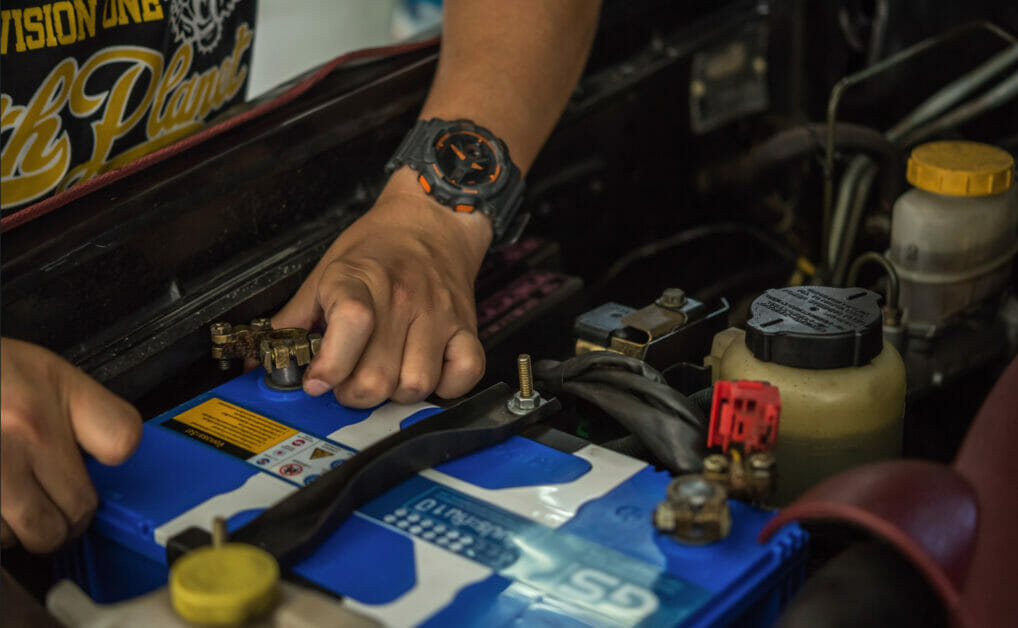
Lead sulfate crystals form on the lead plates when a lead-acid battery discharges.
The sulfation can become significant over time, leading to the battery requiring reconditioning or recycling. Fortunately, there’s a safe way to recondition a battery, as long as it’s not physically damaged. All you need is a smart charger with a reconditioning feature.
“Battery reconditioning” on a vehicle battery charger refers to restoring the health of a battery to its full charge capacity and with the normal electrolyte level. A new smart charger can recondition a battery by sending short bursts of low-frequency signals to disintegrate the sulfate crystals.
It then manages the current and voltage levels in stages by applying slow amperage initially, maximum amperage to quickly charge the battery to around 80%, then a steadier amperage while checking whether the voltage has reached 100%. It continues by floating charging so as not to overcharge the battery.
This detailed article covers what reconditioning involves, why and when it is appropriate to recondition a battery, factors that affect the process, the reconditioning process, and the smart chargers that make it possible.
Reconditioning
What is Reconditioning?
Reconditioning a battery means restoring it to its fully functioning capacity.
It should not be confused with recharging. Recharging involves only charging the battery, whether in an uncontrolled or controlled (or smart) way. Reconditioning involves recharging smartly but after restoring the battery to make it capable of recharging.
Ways of Reconditioning
You can recondition a battery in more than one way.
You can do it manually by draining the electrolyte, cleaning it thoroughly from the inside, refilling it, and recharging it carefully. But this article focuses on reconditioning a battery using a special smart charger.
Smart chargers generate high-powered electrical pulses to recondition a battery. They usually indicate the battery is being reconditioned by displaying “I=I=I=I” on their screens.
What Reconditioning Involves
The reconditioning option available on most smart chargers can breathe new life into a deeply discharged or severely overcharged battery, which is impossible with a regular charger.
Reconditioning involves reversing the chemical reactions inside the battery and reducing the sulfation, i.e., the crystal formations on the battery cell’s electrodes due to the electrolyte. The reconditioning option effectively reconditions the battery, making it usable again.
A smart charger, thus, eliminates the need to recondition the battery manually.
Why and When to Recondition a Battery
In this section, I address three important questions you might ask when considering reconditioning a battery. They are:
- How long do reconditioned batteries last (so, is it worth reconditioning)?
- When is the right time to recondition a battery?
- What type of batteries can be reconditioned?
Lifespan of Reconditioned Batteries
A reconditioned battery typically lasts up to one year.
You might get some months extra if you repeat the reconditioning process, but you can only recondition a few times. So, if, for instance, the lead-acid battery is sulfated too much after around 2-3 years of purchasing it in a new condition, and you recondition it three times, you can probably extend its lifespan to make it last close to the maximum of 4-5 years.
When to Recondition a Battery
When is the right or ideal time to recondition a battery?
You shouldn’t attempt to recondition a perfectly healthy battery. Only recondition a battery when it is necessary and useful to do so.
Usually, you can try reconditioning a battery if it is too deeply discharged, overcharged, or lost about 30-50% of its original capacity. The lost ability to recharge fully is often due to the sulfation on its plates.
Types of Batteries that can be Reconditioned
Although I’ve focused on lead-acid batteries used in vehicles, you can also use a smart charger to recondition certain other types of batteries.
The other battery types that can be reconditioned include lithium-ion, NiCad (Nickel Cadmium), and NiMH (Nickel Metal Hydride) batteries. For example, it means you can also recondition laptop batteries. It’s also possible to recondition hybrid batteries.
However, different types of batteries (if they can be reconditioned) have their method of reconditioning due to the differences in their chemical constitution.
The reconditioning process described in this article applies only to lead-acid batteries, as used in cars and other vehicles.
Factors that Affect Battery Reconditioning
How effectively a smart battery charger reconditions a battery, or how long it takes, depends on certain factors.
It depends on:
- The battery’s current and voltage levels
- The extent of crystal formation
- The charging regulator
Current and Voltage
The quality of smart chargers may differ on how well they can monitor the battery’s current and voltage levels.
They use this information to make calculations and adjust these levels, so accuracy is important. Most chargers allow you to read this data in real-time during the charging process.
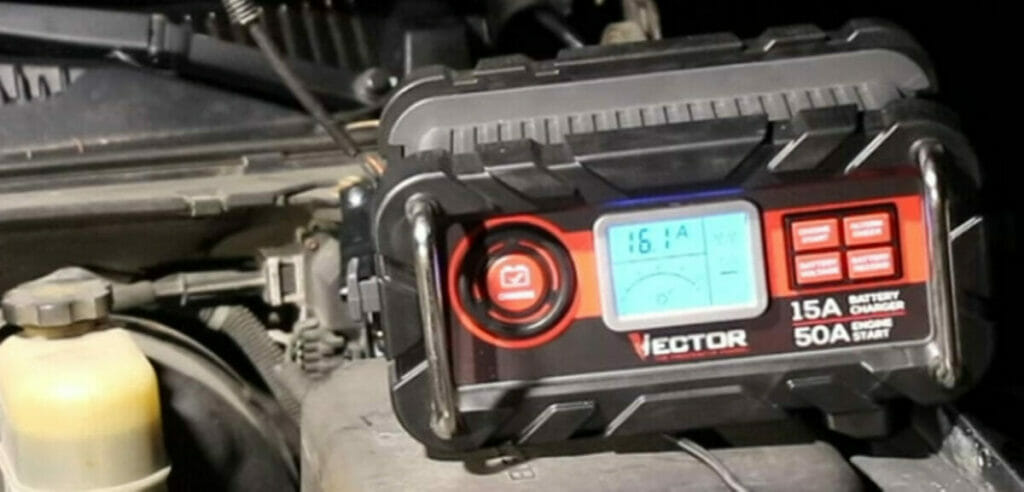
However, all smart chargers manage the reconditioning process by managing the current and voltage levels in stages. These levels follow a pattern somewhat like those shown in the graphs below.
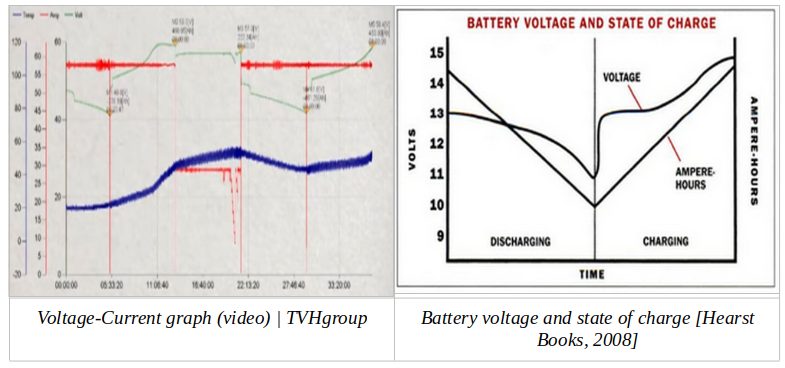
Crystal Formation
Dissolving the sulfate crystals to reduce the sulfation inside the battery is the main task of the desulfation process while reconditioning it.
This smart charger function makes it stand out from other ordinary battery chargers. You cannot recondition a battery without desulfating it. The high-frequency electrical signals help weaken and break the bonds and dissolve the crystals.
I’ve written more about how smart chargers further desulfate a battery.
Charging Regulator
The charging regulator (and its quality) is key in managing the current and voltage levels.
The charger detects the output signal from the battery and regulates the output after processing the data to manage the reconditioning and charging processes.
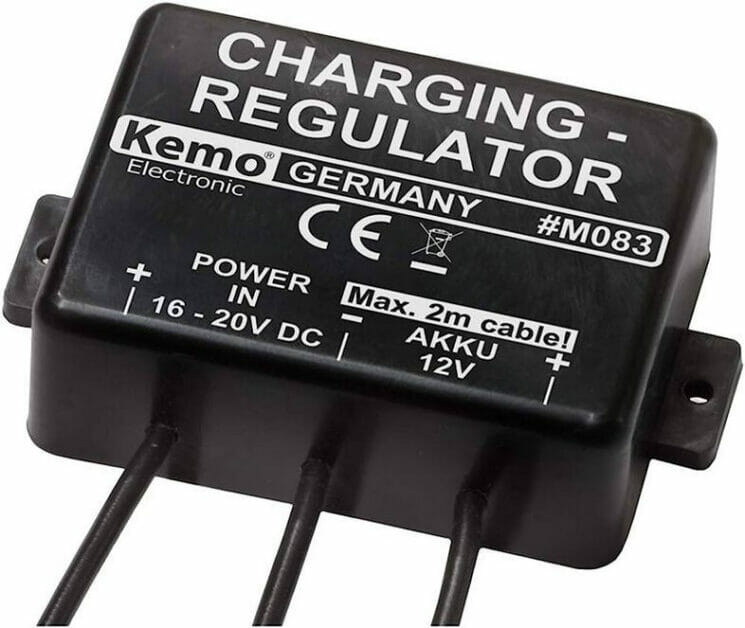
Chargers Capable of Reconditioning
A vehicle battery charger capable of reconditioning is like a regular one but with a built-in microprocessor to monitor the battery’s current and voltage levels.
It analyzes the battery’s health while charging it and decides whether it requires normal charging or reconditioning. It makes calculations, compares them with expected values, and adjusts the levels accordingly. It also ensures that the battery doesn’t get overcharged.
These features make it a smart charger. Examples are given at the end of this article.
Overcharging
Whereas a smart charger can avoid overcharging by itself, a normal charger cannot do that.
Smart chargers achieve this by continuously and closely monitoring the battery.
The Battery Reconditioning Process
When a battery undergoes reconditioning by a smart charger, the process is typically as follows in six stages:
Desulfation > Slow Amperage > Max Amperage > Steady Amperage > Voltage Check > Float Charging
The reconditioning process

The entire reconditioning and recharging process takes around 24-36 hours, depending on the battery’s initial voltage, condition, age, and the smart charger used. Generally, it will take longer, i.e., the upper end of this interval (30-36 hours), if the battery is heavily sulfated and deeply discharged.
Stage 1: Desulfation
The reconditioning process begins with desulfation.
The battery charger sends short bursts of low-frequency signals to the battery, which helps to disintegrate the sulfur precipitates on its electrodes gradually. The precipitates change into sulfur ions, transforming into sulfuric acid with hydrogen and oxygen in the electrolyte.
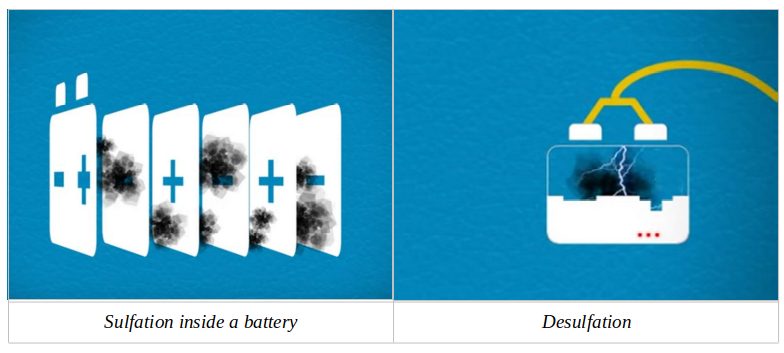
Stage 2: Slow Amperage
After desulfation, the charger applies only around half (~50%) of the maximum current to get the battery ready before charging it properly.
So, if the maximum current it will apply later is 16 amps, it will apply around 5-8 amps during this stage. This ensures the battery is not harmed, especially if it is deeply discharged.
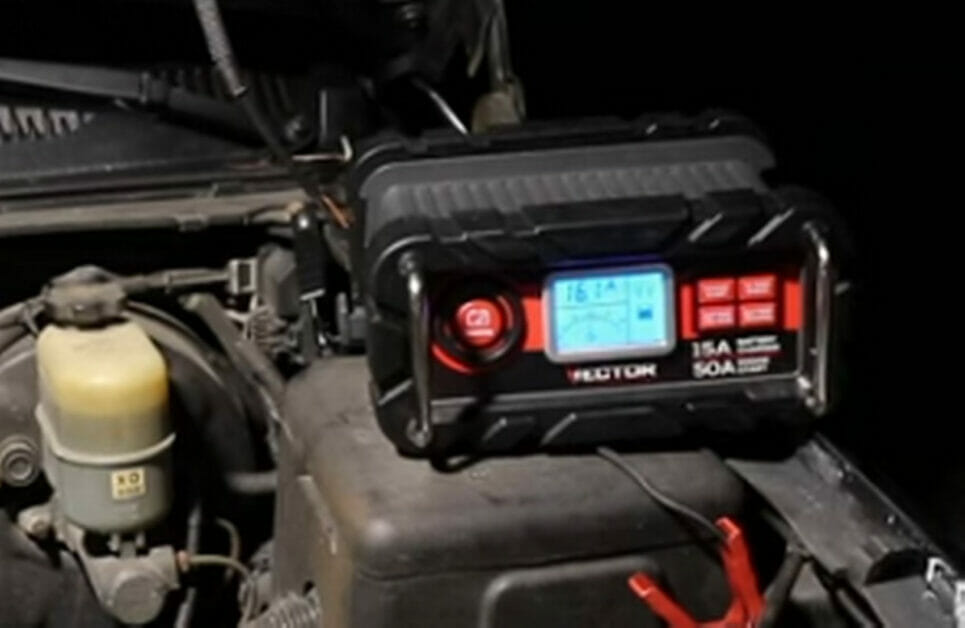
Stage 3: Maximum Amperage
The main charging phase begins in the third stage, when the charger applies maximum amperage.
The charger applies full (100%) current to quickly charge the battery up to around 75-80% of its charge or voltage capacity. The maximum current applied is usually around 12-16%. It doesn’t charge the battery fully but leaves around 20-25% to be charged differently in the subsequent stages.
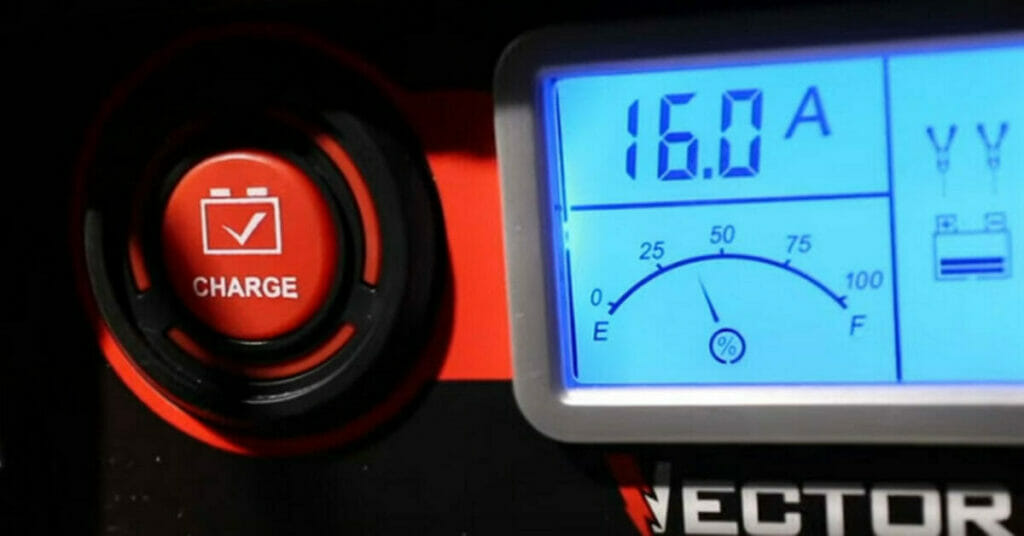
Stage 4: Steady Amperage
The charger applies a steadier current beyond this charge level after quickly charging the battery to a high (~80%) capacity.
Depending on the charger, it might be around 8-12 amps, which is ideal for normal charging.
Stage 5: Voltage Check
While the battery charger applies a steady current, it also regularly monitors the battery’s voltage.
The charger maintains a steady amperage as long as the voltage does not reach full (100%) capacity. Stages 4 and 5 are iterative (forming a loop) until the battery is fully charged.
Stage 6: Float Charging
Upon reaching full (100%) charge, indicated by around 12.8 volts, the smart charger switches to float charging.
It is also known as “MAINTENANCE MODE,” as that might be displayed on the charger’s screen instead of “FLOAT CHARGING” or simply “FLO.”
While float charging, the charger ensures the battery is not overcharged. Applying a low current only replenishes the diminished charge when the voltage drops below the maximum level.
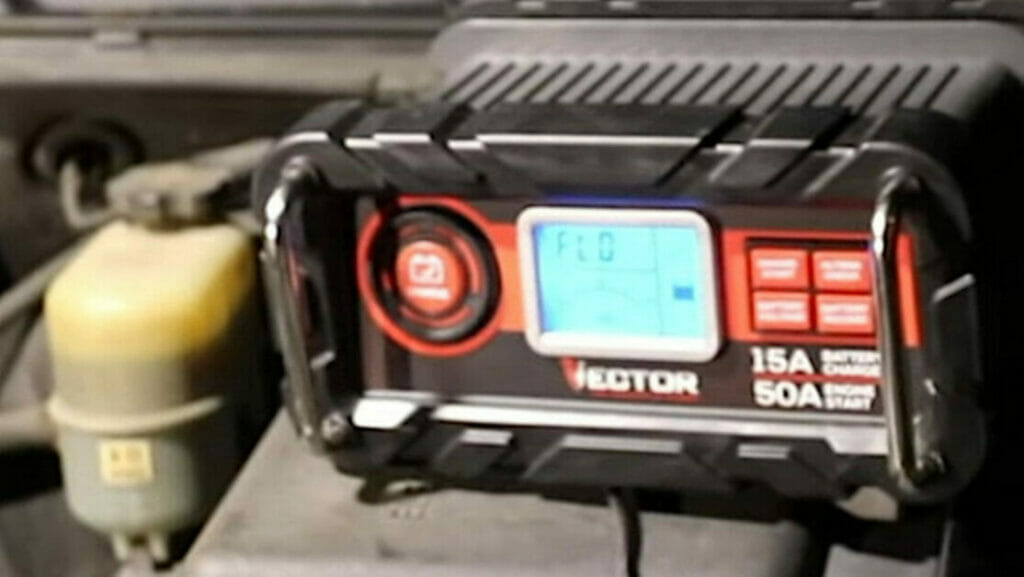
The battery is fully reconditioned and charged but will remain in maintenance mode to undergo float charging to maintain the battery at 100% capacity (without overcharging).
Why is Reconditioning Using a Smart Charger a Good Idea?
I mentioned earlier that reconditioning a battery using a smart charger is recommended over manual reconditioning, but it gives other benefits, too.
As long as the battery is not physically damaged, reconditioning in this way is environmentally friendly, great for preventive maintenance, provides a longer battery lifespan, and offers money savings.
Environmentally Friendly
When disposing of lead-acid batteries, they release harmful chemicals, which can contaminate the water and soil.
The solid waste from lead-acid batteries in the United States amounts to over 3 million tons, about 19 pounds per resident. It’s a massive problem on a global scale. Reconditioning weak and old batteries using a smart charger is, therefore, an environmentally-friendly solution to mitigate the problem in addition to recycling them.
Lead is highly toxic and expensive, so recycling is a cost-effective solution.
Preventive Maintenance
Smart charging your vehicle’s battery is a preventive maintenance measure.
A smart charger doesn’t guarantee that it can revive a very weak, old, or dead battery, but at least it offers a way to minimize sulfation and maximize its lifespan. Eventually, all lead-acid batteries will corrode internally to the point that they can no longer be used and must be dismantled safely and their parts recycled. But it ensures the battery is charged efficiently and used to its available capacity.
Longer Battery Lifespan
Repeated overcharging naturally reduces the lifespan of a battery because all batteries have limited charge-discharge cycles.
But, smart charging a battery offers a controlled charging process that minimizes the natural degradation to offer a longer lifespan than normal charging.
Money Savings
The more-efficient charging method offered by smart chargers and reconditioning the battery, which makes the battery last longer, also provides money savings.
You won’t need to buy a new battery that often by making an existing one last longer. Reviving batteries is also a potential business opportunity.
Vehicle Batteries
The batteries used in vehicles are mostly lead-acid ones that last up to 3-5 years.
All the above benefits apply if you recondition and charge them using a smart charger. It will help the environment by reducing exposure to pollutants and the risk of contaminating water and the soil, extending the battery’s lifespan, and saving money.
When Should You Not Recondition?
You cannot keep reconditioning batteries forever.
Under certain conditions, it is better not to recondition a battery, or it’s no longer possible. They are:
A Physically Damaged Battery
You cannot recondition a damaged battery, i.e., if it’s leaking, swelling, punctured, or otherwise damaged in any way.
A Battery Reconditioned Multiple Times
There’s usually a limit to how often you can recondition a battery because it degrades with every reconditioning process.
Usually, you can only recondition a battery safely up to three times. Beyond that, it becomes less likely to recondition it successfully.
Without Having the Required Tools
If you don’t have a smart charger capable of reconditioning, it’s better not to attempt it in any other way.
Manual reconditioning is possible but best done by an expert because it requires several safety measures to protect oneself from the corrosive acid.
Examples of Smart Chargers Capable of Reconditioning
If you don’t already own a smart charger capable of reconditioning and are interested in buying one, here are some examples.
They all manage the current carefully, monitor the voltage, and prevent overcharging.
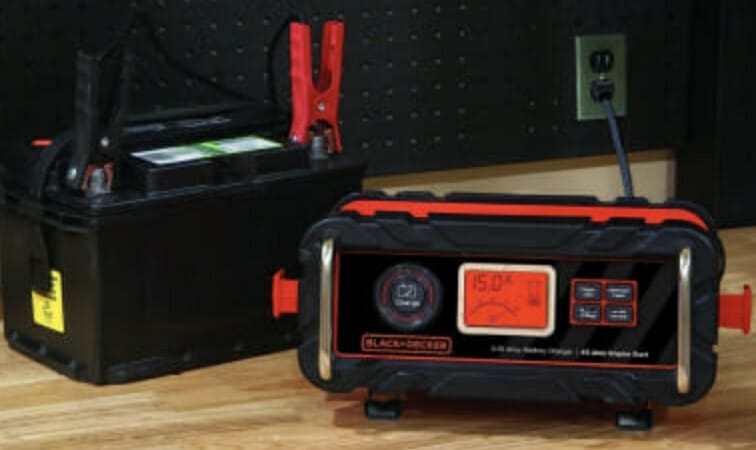
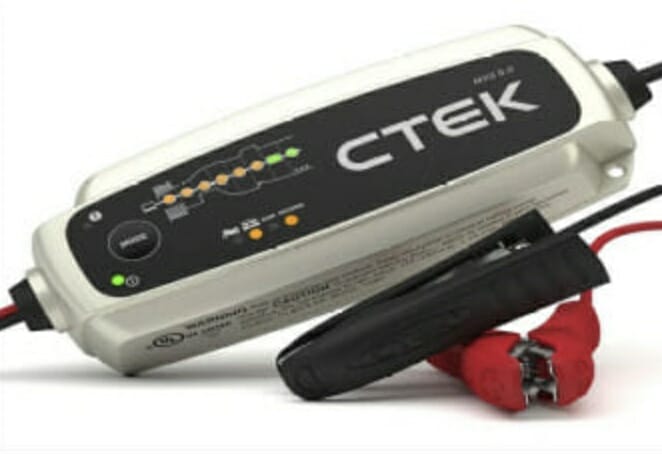
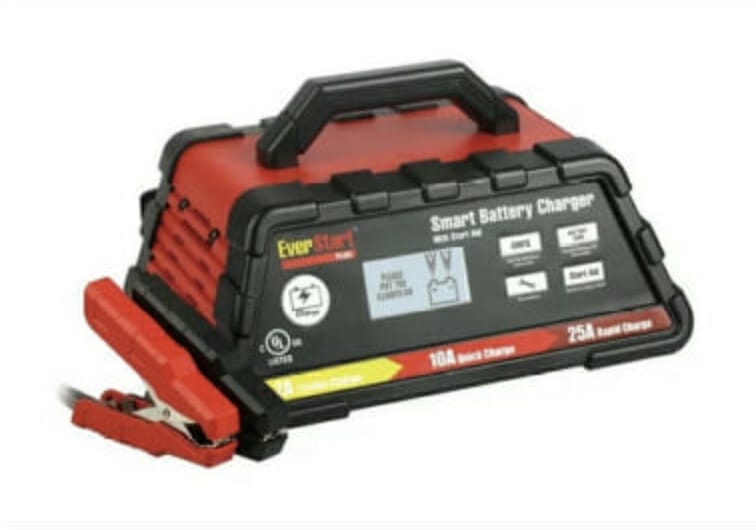
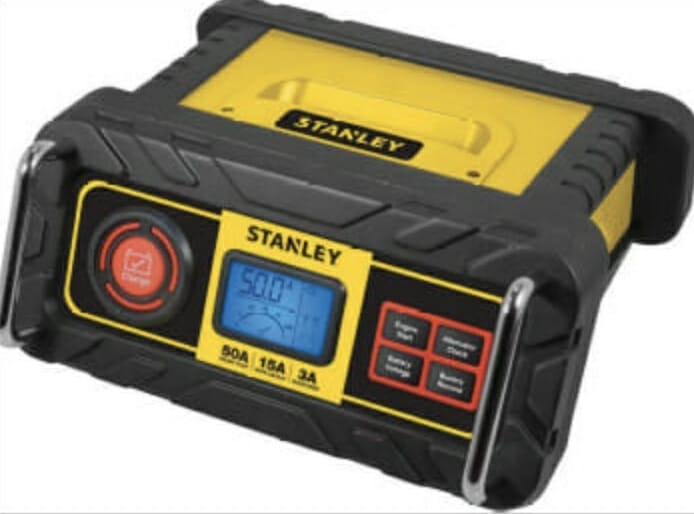
Here are details of the above four reconditioning chargers:
- The Black & Decker 40-amp smart charger has a built-in 110-amp engine starter function apart from its ability to desulfurize batteries like the others.
- The Stanley 15-amp smart charger also has a built-in (40-amp) engine starter.
- The reconditioning function in the Everstart Plus charger works separately from its charging function.
- The CTEK MXS 3.8 smart battery charger applies a 7-stage reconditioning and charging process, while the company’s CTEK MXS 5.0 and higher-power CREK MXS 7.0 models use an 8-stage process.
If you prefer an industrial-grade, heavy-duty, quick, and highly durable vehicle battery charger, the DEWALT 80-amp reconditioning charger is another good choice. It can usually recharge in less time than other battery chargers.
If you prefer a more general-purpose charger that can also be used for lawnmowers, golf carts, RVs, and trucks, consider the Vector smart battery charger. Note that it can only be used to charge 12V lead-acid batteries.
References
Black and Decker Battery Charger. https://www.amazon.com/BLACK-DECKER-BC15BD-Battery-Alternator/dp/B00KNMKRU8/
Charging Regulator. https://www.amazon.co.uk/BATTERY-CHARGING-REGULATOR-CARAVAN-SYSTEM/dp/B003A5WUTG
CTEK Smart Charger. https://smartercharger.com/collections/car-battery-chargers/products/ctek-mxs-5-0
Everstart Smart Charger. https://www.walmart.com/ip/EverStart-25A-Portable-Smart-Battery-Charger-with-LCD-Display/138121225
Stanley Smart Charger: https://www.walmart.com/ip/STANLEY-15-Amp-Battery-Charger-with-50-Amp-Engine-Start-BC50BS/749526811
Hearst Books. Popular Mechanics Complete Car Care Manual. Hearst Books. 2008
Video References
BatteryRecondition
Kukomio
Markthomasbuilder
TVHgroup

Nice article, lots of good information there – thanks!
There are a few things you may want to mention:
1) Most recon chargers are not intended for dual battery setups (like diesels and some campers).
2) A wiring problem (parasitic drain, etc) can skew the current measurement of the charger. Simply removing the battery from the car while charging will the charger to work properly.
3) Some chargers do not have the ability to turn off the reconditioning feature.